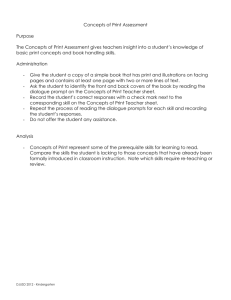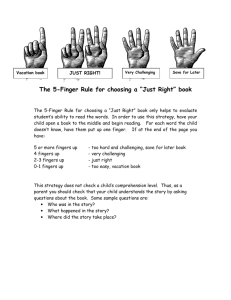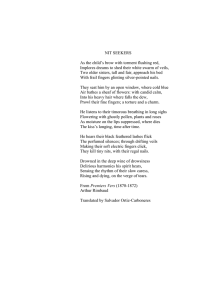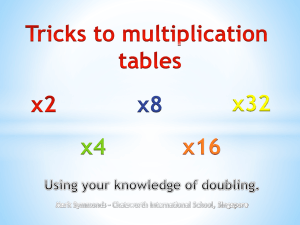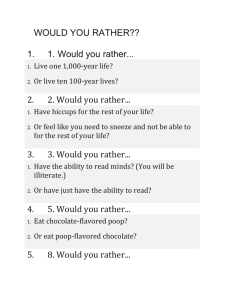Fist to Five Working with Groups: Suggestion:
advertisement
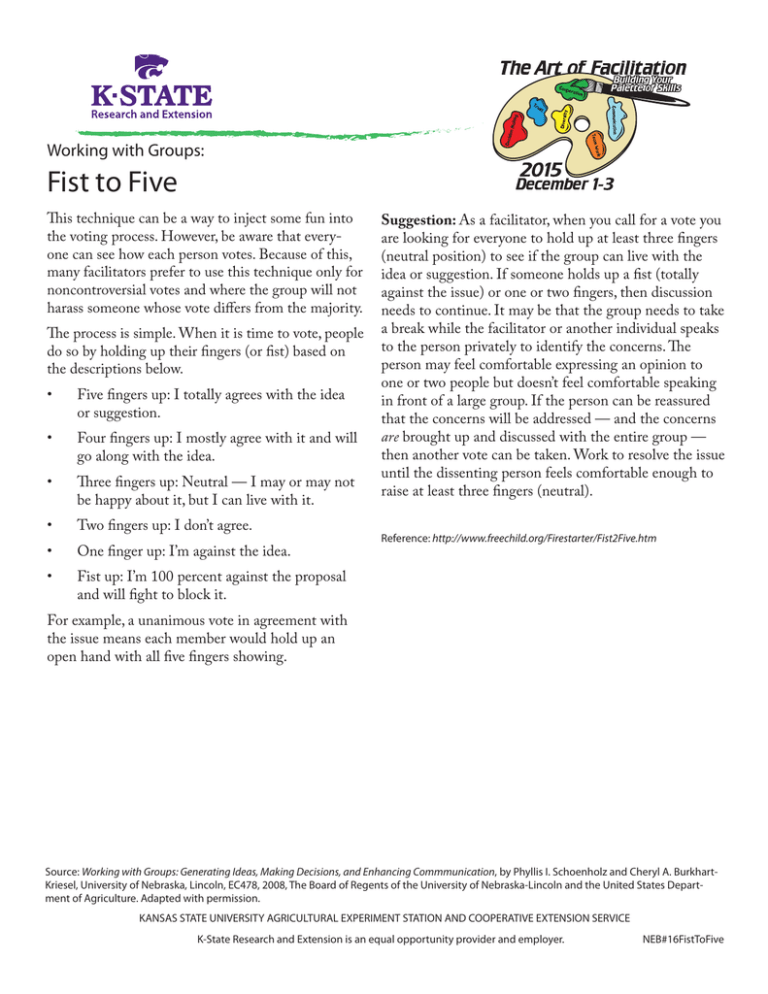
Working with Groups: Fist to Five This technique can be a way to inject some fun into the voting process. However, be aware that everyone can see how each person votes. Because of this, many facilitators prefer to use this technique only for noncontroversial votes and where the group will not harass someone whose vote differs from the majority. The process is simple. When it is time to vote, people do so by holding up their fingers (or fist) based on the descriptions below. • • • • • • Five fingers up: I totally agrees with the idea or suggestion. Four fingers up: I mostly agree with it and will go along with the idea. Three fingers up: Neutral — I may or may not be happy about it, but I can live with it. Two fingers up: I don’t agree. One finger up: I’m against the idea. Suggestion: As a facilitator, when you call for a vote you are looking for everyone to hold up at least three fingers (neutral position) to see if the group can live with the idea or suggestion. If someone holds up a fist (totally against the issue) or one or two fingers, then discussion needs to continue. It may be that the group needs to take a break while the facilitator or another individual speaks to the person privately to identify the concerns. The person may feel comfortable expressing an opinion to one or two people but doesn’t feel comfortable speaking in front of a large group. If the person can be reassured that the concerns will be addressed — and the concerns are brought up and discussed with the entire group — then another vote can be taken. Work to resolve the issue until the dissenting person feels comfortable enough to raise at least three fingers (neutral). Reference: http://www.freechild.org/Firestarter/Fist2Five.htm Fist up: I’m 100 percent against the proposal and will fight to block it. For example, a unanimous vote in agreement with the issue means each member would hold up an open hand with all five fingers showing. Source: Working with Groups: Generating Ideas, Making Decisions, and Enhancing Commmunication, by Phyllis I. Schoenholz and Cheryl A. BurkhartKansas State University Agricultural Experiment Station and Cooperative Extension Service Kriesel, University of Nebraska, Lincoln, EC478, 2008, The Board of Regents of the University of Nebraska-Lincoln and the United States DepartK-State Research and Extension is an equal opportunity provider and employer. ment of Agriculture. Adapted with permission. KANSAS STATE UNIVERSITY AGRICULTURAL EXPERIMENT STATION AND COOPERATIVE EXTENSION SERVICE K-State Research and Extension is an equal opportunity provider and employer. NEB#16FistToFive
